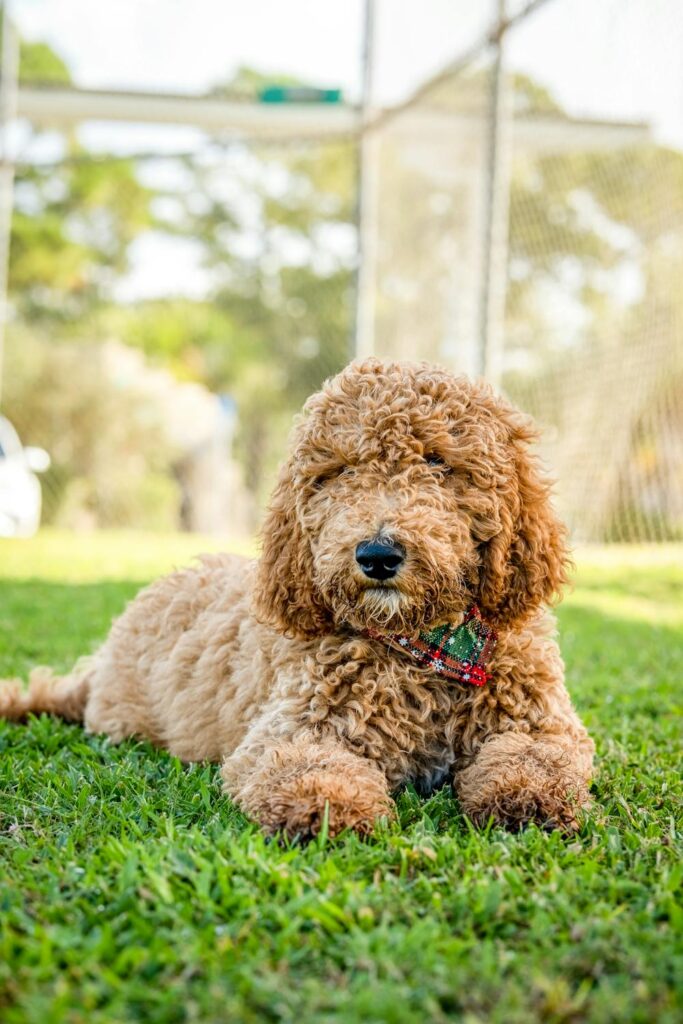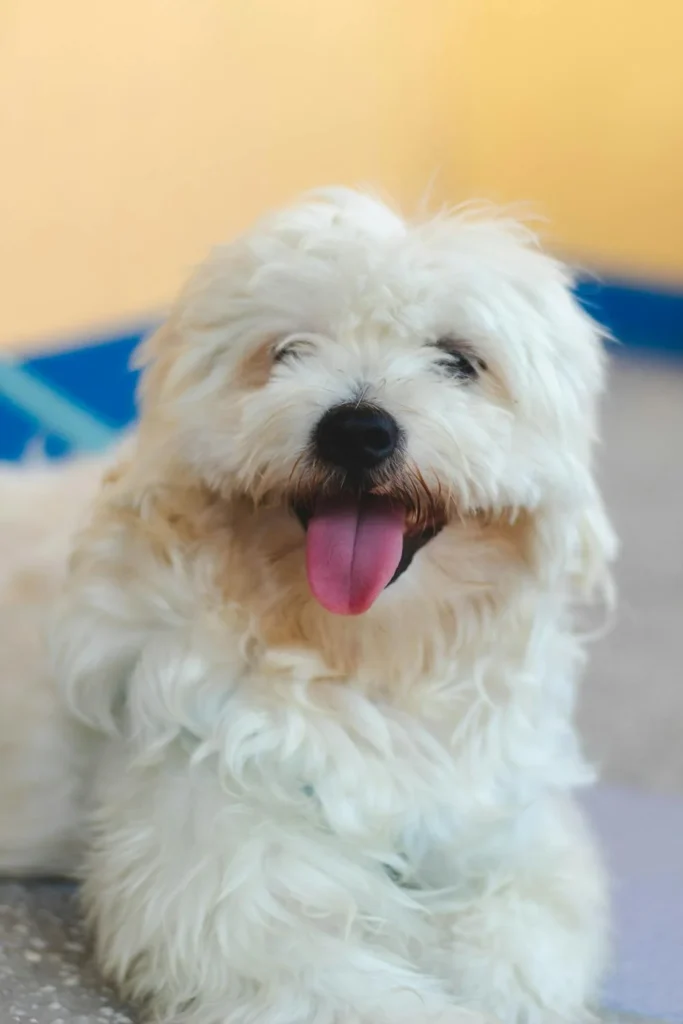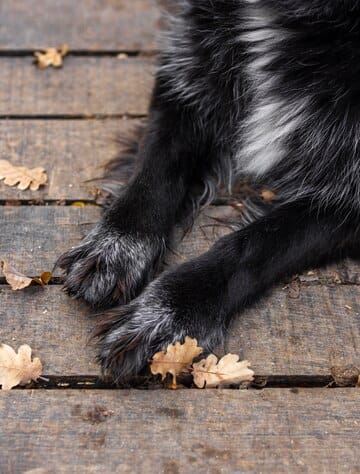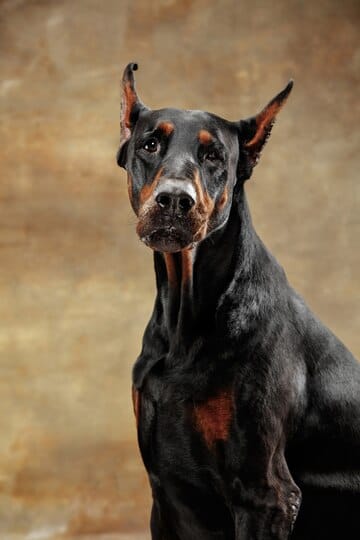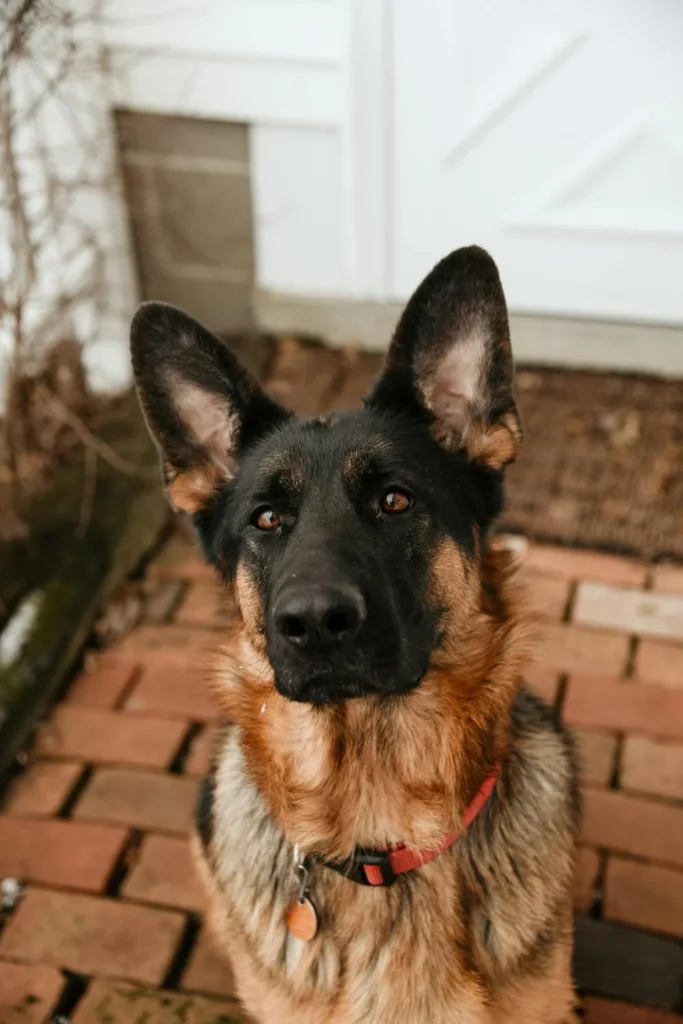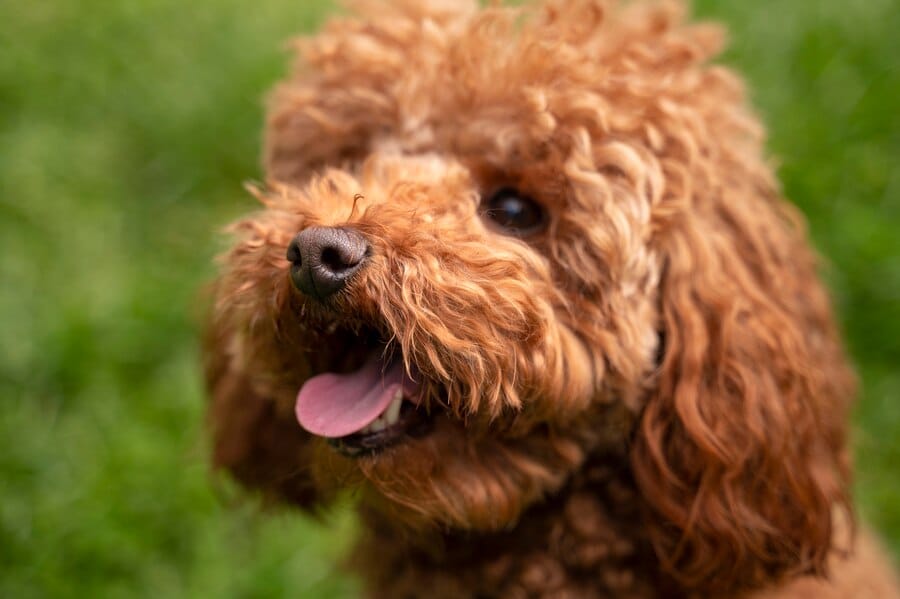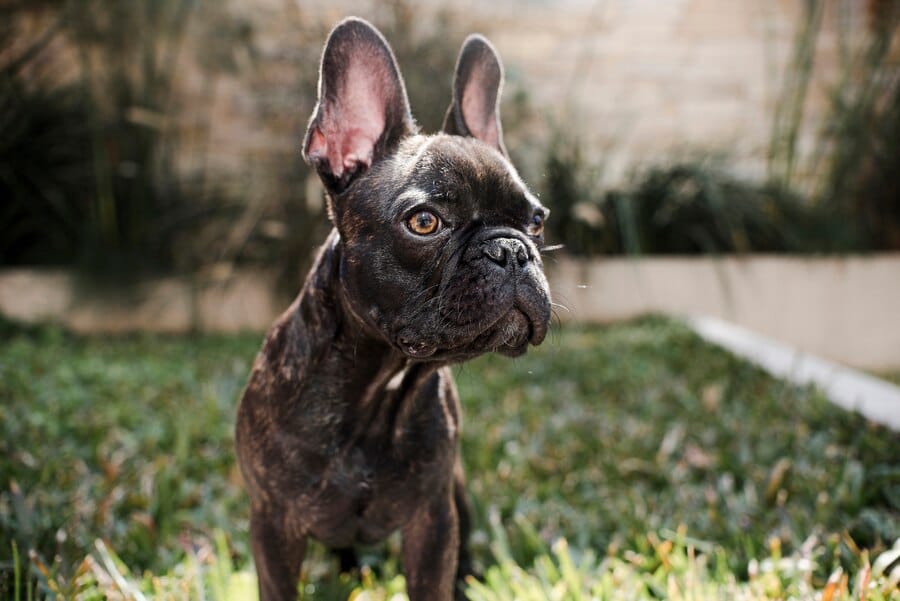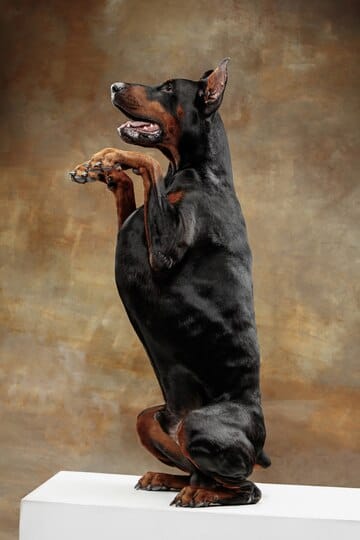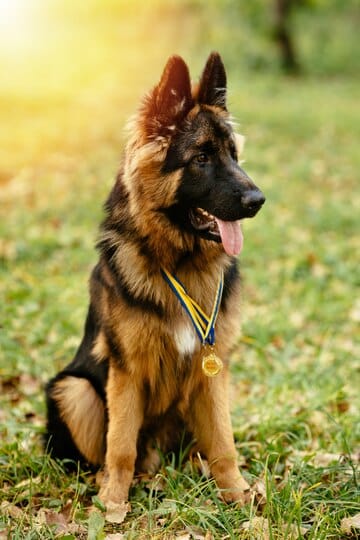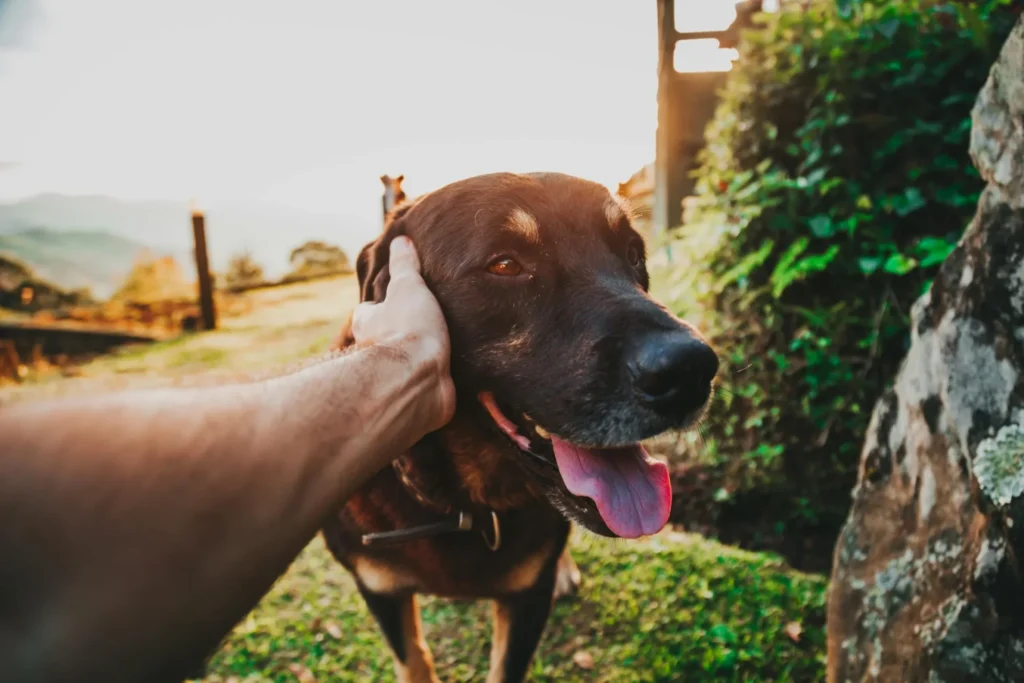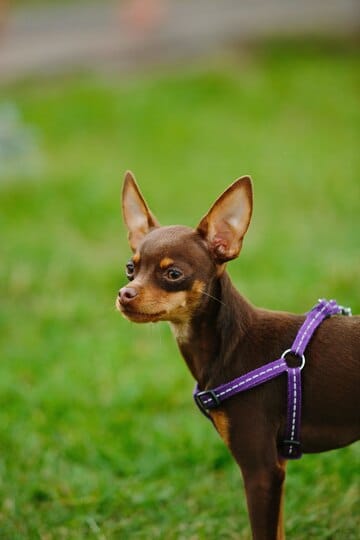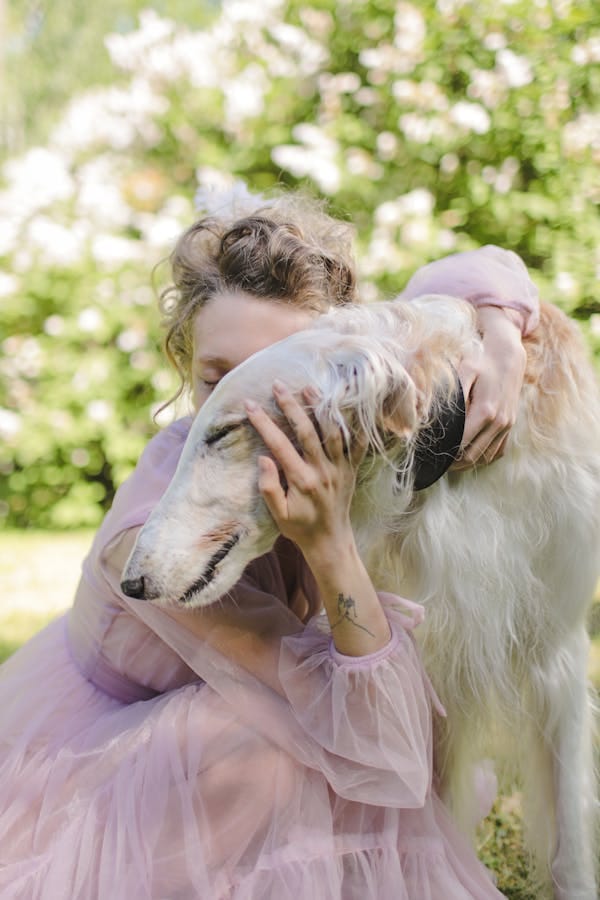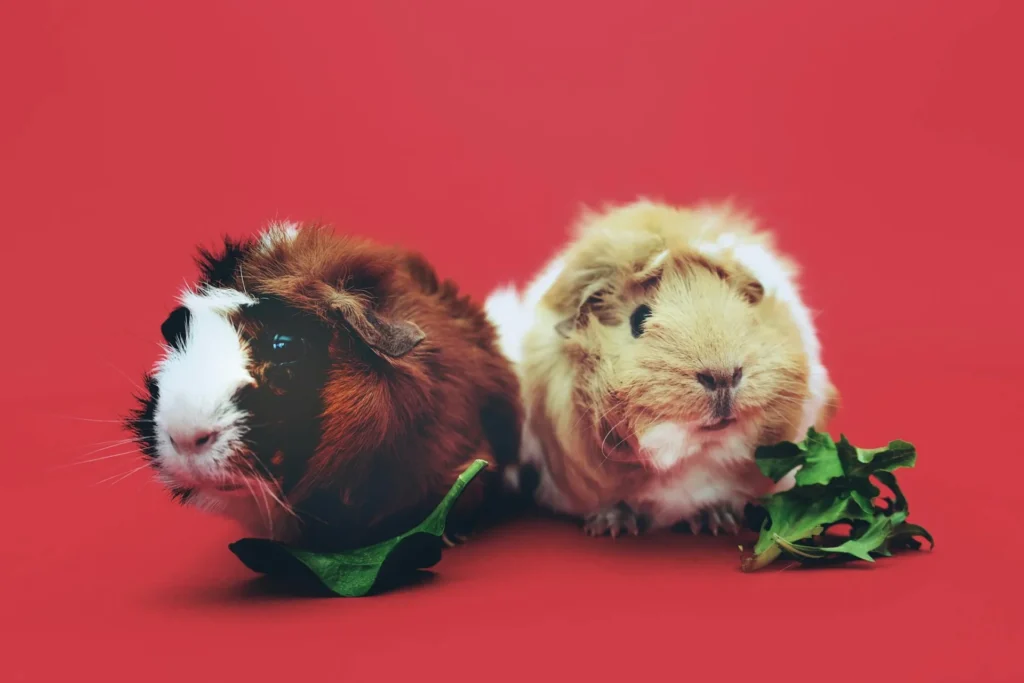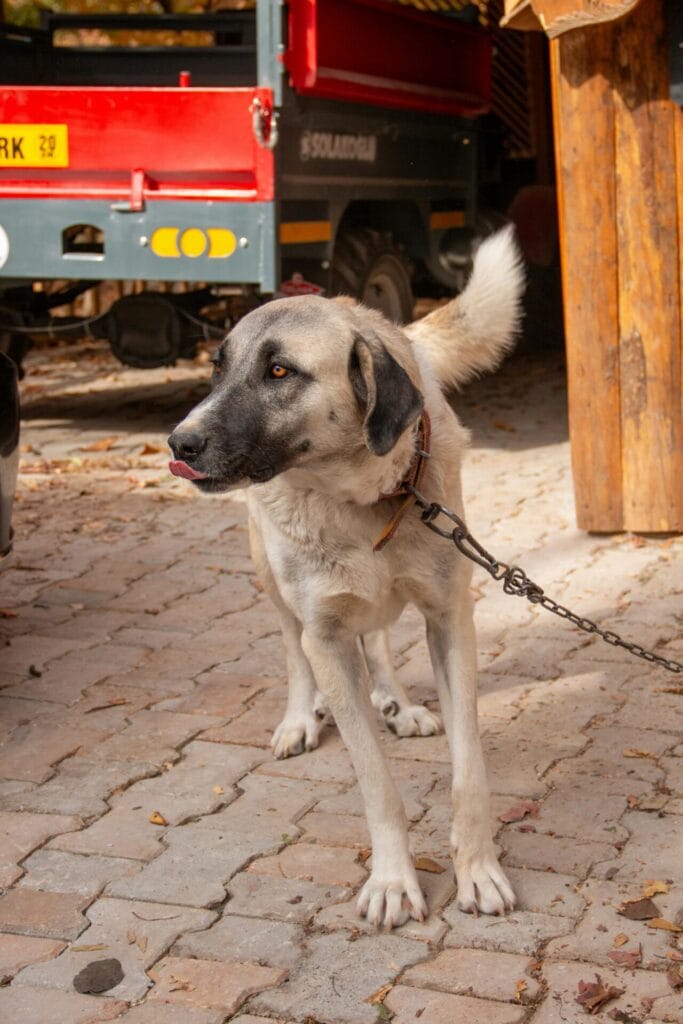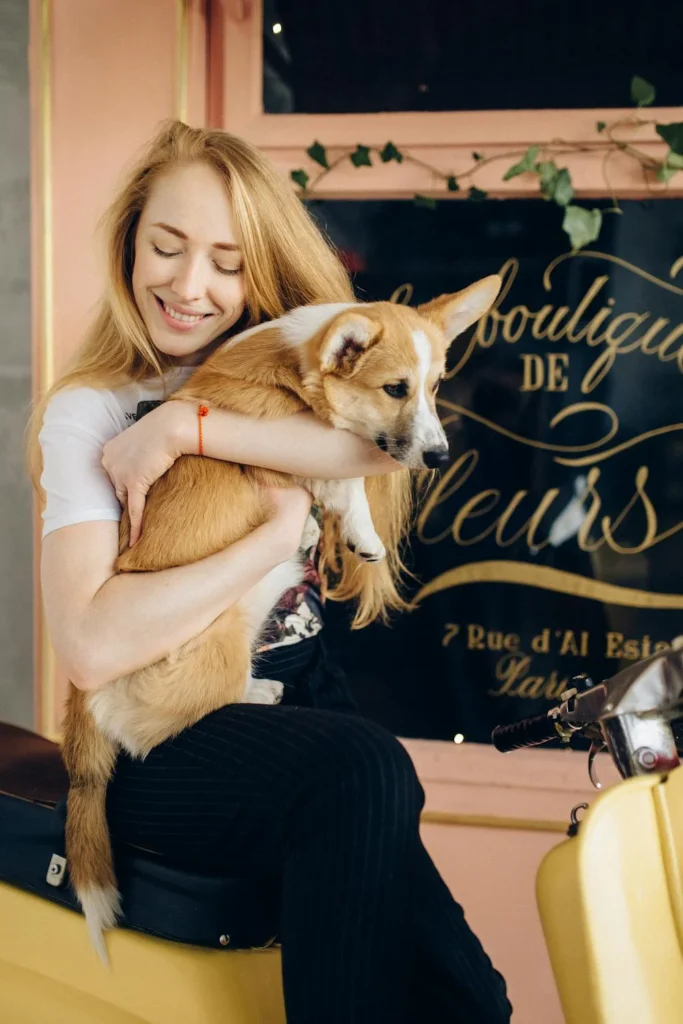The Goldendoodle has rapidly become one of the most popular designer dog breeds, capturing hearts worldwide with its adorable teddy bear looks and affectionate nature. As a cross between the Golden Retriever and the Poodle, this hybrid breed inherits the best traits from both parent breeds, making them exceptional family companions. In this comprehensive guide, we’ll explore everything you need to know about the Goldendoodle, from their appearance and temperament to their care requirements, coat colors, and history.
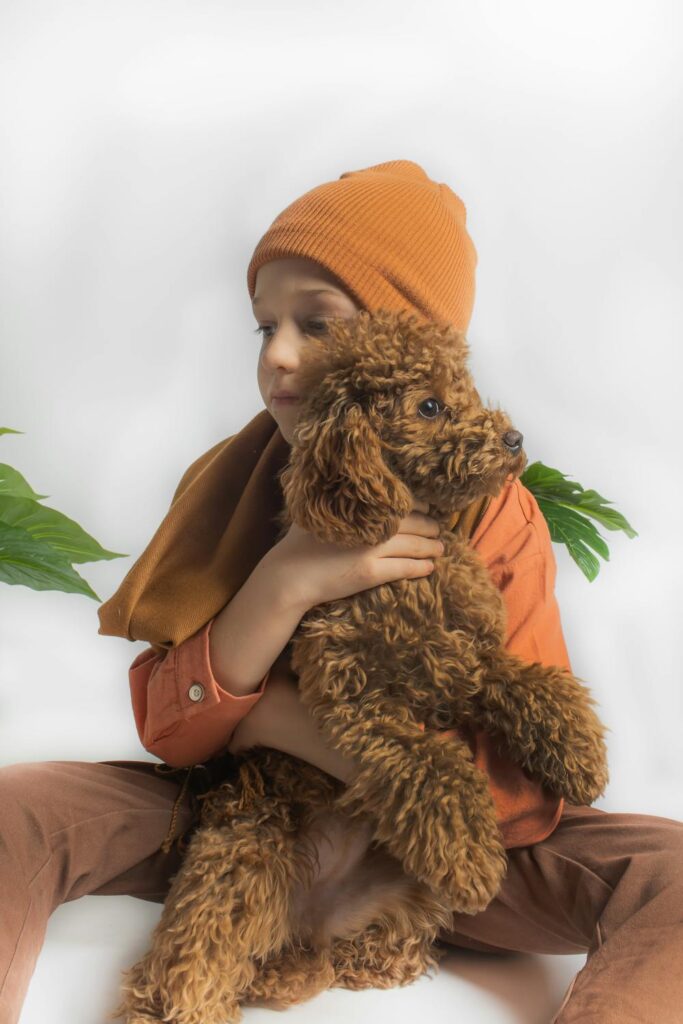
Quick Goldendoodle Facts
Before diving into the details, let’s start with some essential Goldendoodle facts:
| Fact | Details |
|---|---|
| Origins | First bred in the late 1990s as a hypoallergenic guide dog |
| Lifespan | 10 to 15 years on average |
| Weight | Standard: 50 to 90 lbs, Miniature: 15 to 35 lbs |
| Height | Standard: 20 to 24 inches, Miniature: 15 to 20 inches, Toy: 10 to 15 inches |
| Colors | Cream, golden, apricot, red, brown, and more |
| Coat Types | Straight, wavy, or curly |
The Goldendoodle Appearance
One of the most striking features of the Goldendoodle is their teddy bear-like appearance. With their soft, fluffy coats and friendly expressions, they’re sure to melt your heart at first sight.
Coat Types and Grooming Needs
Goldendoodles can have three main coat types:
| Coat Type | Description | Grooming Needs |
|---|---|---|
| Straight Coat | Similar to the Golden Retriever’s coat, this type sheds moderately. | Regular brushing and occasional baths. |
| Wavy Coat | A combination of the Golden Retriever and Poodle coats, this type sheds less than the straight coat. | More frequent brushing and trimming to prevent matting and tangling. |
| Curly Coat | Resembling the Poodle’s coat, this type is often considered hypoallergenic and low-shedding. | Professional grooming every 6 to 8 weeks is recommended to prevent matting and keep their curly coat in good condition. |
Regardless of their coat type, all Goldendoodles benefit from regular brushing, trimming, and occasional baths to maintain their coats’ health and appearance.
Size Variations
Goldendoodles come in three main size variations:
| Size Variation | Height Range | Weight Range |
|---|---|---|
| Standard Goldendoodle | 20 to 24 inches | 50 to 90 pounds |
| Miniature Goldendoodle | 15 to 20 inches | 15 to 35 pounds |
| Toy Goldendoodle | 10 to 15 inches | 10 to 20 pounds |
- Standard Goldendoodle: Bred from a Golden Retriever and a Standard Poodle, these dogs typically stand 20 to 24 inches tall and weigh between 50 and 90 pounds.
- Miniature Goldendoodle: Created by crossing a Golden Retriever with a Miniature Poodle, these dogs range from 15 to 20 inches in height and weigh 15 to 35 pounds.
- Toy Goldendoodle: The smallest variation, these dogs are bred from a Golden Retriever and a Toy Poodle, standing 10 to 15 inches tall and weighing 10 to 20 pounds.
The size variation you choose will depend on your living situation and personal preferences, as each size has its own unique characteristics and care requirements.
Coat Colors of Goldendoodles
Goldendoodles can inherit a wide range of coat colors from their parent breeds, resulting in a beautiful variety of shades and patterns. Some of the most common Goldendoodle coat colors include:
| Coat Color | Description |
|---|---|
| Cream | A pale, creamy white color, often with a hint of yellow or golden hues. |
| Golden | Rich, warm shades of golden brown, similar to the Golden Retriever’s coat. |
| Apricot | A soft, peachy-orange hue that can range from light to deep shades. |
| Red | Ranging from a deep russet red to a lighter, reddish-golden color. |
| Brown | Various shades of brown, from light caramel to rich chocolate tones. |
| Black | A deep, solid black color, often with a slight sheen. |
| Parti-colored | A combination of two or more colors, with distinct patches or markings. |
It’s important to note that Goldendoodles can also inherit unique patterns and markings, such as tuxedo patterns, phantom markings, or even merle coats (although merle is a controversial pattern due to potential health issues).
The Goldendoodle Temperament
One of the most endearing qualities of the Goldendoodle is their loving and affectionate nature. Inheriting the gentle and family-friendly temperament from both parent breeds, they make excellent companions for households with children and other pets.
Intelligence and Trainability
Goldendoodles are highly intelligent dogs, thanks to their Poodle lineage. They are eager to please and respond well to positive reinforcement training methods, making them relatively easy to train. However, their Golden Retriever side may also contribute to a bit of stubbornness, so early socialization and consistent training are essential.
Social and Affectionate Personality
Goldendoodles thrive on human companionship and tend to form strong bonds with their families. They are known for their outgoing and friendly personalities, making them excellent therapy dogs and service dogs. However, their affectionate nature may also lead to separation anxiety if left alone for extended periods.
Generational Differences
It’s important to note that the temperament of a Goldendoodle can vary depending on the generation and breeding. First-generation (F1) Goldendoodles, bred directly from a Golden Retriever and a Poodle, tend to have more consistent and predictable temperaments. However, later generations (F2, F3, etc.) may exhibit a wider range of traits, as their genetic makeup becomes more diverse.
Goldendoodle Living Needs
Goldendoodles are relatively adaptable dogs, but they do have specific living needs to ensure their happiness and well-being.
Exercise Requirements
Goldendoodles are active dogs with moderate to high energy levels. They require daily exercise to maintain their physical and mental health. Depending on their size and energy level, they may need 30 to 60 minutes of exercise per day, which can include activities such as:
- Walking or jogging
- Playing fetch
- Swimming
- Hiking
- Agility training
Providing your Goldendoodle with enough exercise will help prevent destructive behaviors and keep them physically fit.
Suitability for Apartments
While Standard Goldendoodles may not be the best choice for apartment living due to their size and energy levels, Miniature and Toy Goldendoodles can make excellent apartment companions. These smaller variations require less space and can get adequate exercise through indoor playtime and daily walks.
Barking and Noise Levels
Goldendoodles are generally not considered excessive barkers, making them suitable for apartment living or homes with close neighbors. However, like any dog, they may bark to alert their owners or when left alone for extended periods.
Space Requirements
Goldendoodles thrive in homes with access to a securely fenced yard or outdoor space where they can run and play. While they can adapt to apartment living, they still require daily walks and opportunities for physical activity to meet their exercise needs.
Caring for a Goldendoodle
Like any pet, Goldendoodles require proper care and attention to ensure their overall health and well-being.
Grooming Needs and Coat Maintenance
Grooming requirements for Goldendoodles vary depending on their coat type:
- Straight Coat: Regular brushing and occasional baths are typically sufficient to maintain their coat.
- Wavy Coat: More frequent brushing and trimming may be required to prevent matting and tangling.
- Curly Coat: Professional grooming every 6 to 8 weeks is recommended to prevent matting and keep their curly coat in good condition.
Regular nail trimming, ear cleaning, and dental care are also essential for all Goldendoodles.
Exercise Needs and Recommended Activities
As mentioned earlier, Goldendoodles have moderate to high exercise needs. In addition to daily walks, they enjoy a variety of activities that provide both physical and mental stimulation, such as:
| Activity | Duration | Benefits |
|---|---|---|
| Walking/Jogging | 30-60 minutes daily | Provides physical exercise and mental stimulation |
| Playing Fetch | 15-30 minutes | Combines physical activity with mental engagement |
| Swimming | 20-40 minutes | Low-impact exercise, good for joint health |
| Hiking | 1-2 hours | Allows for exploration and physical conditioning |
| Agility Training | 30-60 minutes | Challenges the mind and body, builds confidence |
Moreover, other games such as nose work or scent games, Interactive puzzle toys. etc.. can be added to their schedule. Providing your Goldendoodle with a variety of engaging activities will help prevent boredom and destructive behaviors.
Training and Socialization Tips
Goldendoodles are highly intelligent and respond well to positive reinforcement training methods. Early socialization and obedience training are crucial to ensure they grow into well-mannered and well-adjusted companions.
Here are some training and socialization tips:
- Start training and socialization from an early age
- Use positive reinforcement techniques (treats, praise, and rewards)
- Enroll in puppy socialization classes
- Expose them to various sights, sounds, and experiences
- Be consistent and patient during training sessions
Suitability for First-Time Owners
While Goldendoodles are generally friendly and eager to please, their grooming and exercise needs may make them more suitable for experienced dog owners. However, with proper research, commitment, and access to professional training resources, they can make excellent companions for first-time owners as well.
Nutrition and Feeding Guidelines
Proper nutrition is essential for the overall health and well-being of your Goldendoodle. The following guidelines can help you provide a balanced and nutritious diet:
- Feed a high-quality, age-appropriate dog food formulated for their size and activity level
- Consult with your veterinarian or a pet nutritionist for specific dietary recommendations
- Provide fresh, clean water at all times
- Avoid table scraps and excessive treats, as they can lead to obesity and related health issues
Goldendoodle Health
Goldendoodles are generally healthy dogs, but like any breed, they can be prone to certain health issues.
Average Lifespan and Longevity Factors
The average lifespan of a Goldendoodle is 10 to 15 years. However, their longevity can be influenced by various factors, such as:
- Genetics and breeding practices
- Diet and exercise
- Regular veterinary care
- Environmental factors
Potential Health Issues and Concerns
While Goldendoodles are considered a relatively healthy breed, they can be prone to certain health issues, including:
- Hip and elbow dysplasia
- Eye disorders (e.g., cataracts, progressive retinal atrophy)
- Allergies
- Ear infections
- Bloat
Regular veterinary check-ups, proper care, and responsible breeding practices can help minimize the risk of these health issues.
Importance of Health Clearances from Breeders
When purchasing a Goldendoodle puppy, it’s essential to work with reputable breeders who conduct health clearances on the parent dogs. These clearances can include:
Health Clearances Checklist
- Hip Evaluation
- Elbow Evaluation
- Eye Examination
- Genetic Testing (e.g., von Willebrand’s disease, progressive retinal atrophy)
- Heart Health Screening
- Patellar Luxation Screening
Responsible breeders will provide documentation of these clearances, ensuring that your puppy has a lower risk of inheriting certain health issues.
Vet Rating and Care Requirements
According to veterinary professionals, Goldendoodles are generally considered a healthy breed. However, their care requirements may be higher than some other breeds due to their grooming needs and potential for inheriting health issues from their parent breeds.
Regular veterinary check-ups, preventive care (such as vaccinations and parasite control), and a healthy lifestyle are crucial for maintaining the well-being of your Goldendoodle.
The History of Goldendoodles
Goldendoodles have a relatively recent history, but their popularity has skyrocketed in the past few decades.
Origins as a Crossbreed
The Goldendoodle breed was first intentionally created in the late 1990s by breeding a Golden Retriever and a Standard Poodle. The initial goal was to create a hypoallergenic guide dog that combined the intelligence and low-shedding coat of the Poodle with the gentle temperament and trainability of the Golden Retriever.
Introduction and Growing Popularity
While initially bred for service dog purposes, Goldendoodles quickly gained popularity as family companions due to their affectionate nature and hypoallergenic coats. Their growing demand led to the development of different size variations, such as the Miniature and Toy Goldendoodles.
Development of Different Variations
As the breed gained recognition, breeders began experimenting with different combinations of Golden Retrievers and various Poodle sizes. This led to the creation of Miniature and Toy Goldendoodles, which became popular choices for families living in smaller homes or apartments.
Today, Goldendoodles are recognized by several breed organizations, including the Goldendoodle Association of North America (GANA) and the Australian Labradoodle Association of America (ALAA).
Fun Goldendoodle Facts
In addition to their endearing personalities and versatility, Goldendoodles have some interesting and fun facts associated with them.
Popularity in Australia (“Groodles”)
While the Goldendoodle breed originated in North America, it has gained immense popularity in Australia, where they are affectionately known as “Groodles.” This name combines the words “Golden Retriever” and “Poodle,” reflecting their unique heritage.
Celebrity Goldendoodle Owners
Numerous celebrities have fallen in love with the Goldendoodle breed, including Jennifer Aniston, Viola Davis, and Chrissy Teigen. Their star power has further contributed to the breed’s popularity and recognition.
Famous Goldendoodles
One of the most famous Goldendoodles is Samson, a therapy dog who has touched the lives of countless individuals. Samson’s heartwarming story and his ability to provide comfort and joy have made him a beloved ambassador for the breed.
Interesting Trivia and Little-Known Facts
- The Goldendoodle is sometimes referred to as a “designer dog” or a “hybrid breed,” as it is a deliberate cross between two purebred dogs.
- The Goldendoodle’s name is a portmanteau (combination) of the words “Golden Retriever” and “Poodle.”
- Goldendoodles are often considered hypoallergenic due to their low-shedding coats, although no dog is truly 100% hypoallergenic.
- While not recognized by major kennel clubs as a purebred, Goldendoodles are recognized by several breed organizations dedicated to promoting and preserving the breed.
Getting a Goldendoodle
If you’ve decided that a Goldendoodle is the perfect addition to your family, it’s crucial to take the proper steps to ensure you’re getting a healthy and well-bred puppy.
Finding Reputable Goldendoodle Breeders
When searching for a Goldendoodle breeder, look for the following qualities:
- Health clearances for the parent dogs (hips, elbows, eyes, and genetic testing)
- Socialization and early handling practices
- Ethical breeding practices (no puppy mills or irresponsible breeding)
- Commitment to the breed’s well-being and education
You can find reputable breeders through breed organizations, veterinary recommendations, or online resources dedicated to responsible breeding practices.
Cost of Purchasing a Goldendoodle Puppy
The cost of a Goldendoodle puppy can vary depending on several factors, such as the breeder’s reputation, the puppy’s size, and the geographic location. On average, you can expect to pay anywhere from $1,000 to $3,000 for a well-bred Goldendoodle puppy from a reputable breeder.
Goldendoodle Rescues and Adoption Options
While purchasing a puppy from a responsible breeder is a popular option, you may also consider adopting a Goldendoodle from a rescue or shelter. These organizations often have Goldendoodles or Goldendoodle mixes in need of loving homes.
Adopting a rescue dog not only provides a second chance for a deserving pet but can also be a more cost-effective option compared to purchasing from a breeder.
Breed Organizations and Further Resources
If you’re interested in learning more about the Goldendoodle breed or connecting with other Goldendoodle enthusiasts, consider joining or exploring the following organizations and resources:
- Goldendoodle Association of North America (GANA)
- Australian Labradoodle Association of America (ALAA)
- Online forums and social media groups dedicated to Goldendoodles
These resources can provide valuable information, support, and a sense of community for Goldendoodle owners and prospective owners.
Frequently Asked Questions
Are Goldendoodles hypoallergenic?
While Goldendoodles are often marketed as hypoallergenic due to their low-shedding coats, no dog breed is truly 100% hypoallergenic. However, Goldendoodles with a curly, Poodle-like coat tend to produce less dander and shed minimally, making them a better option for people with allergies compared to breeds with heavy shedding.
How much exercise do Goldendoodles need?
Goldendoodles are active dogs with moderate to high energy levels. They typically require 30 to 60 minutes of exercise per day, including activities like walking, hiking, playing fetch, or agility training. Providing sufficient exercise is crucial to prevent destructive behaviors and maintain their physical and mental well-being.
Are Goldendoodles good with children?
Yes, Goldendoodles are generally excellent with children due to their friendly, patient, and affectionate nature. Their gentle temperament and eagerness to please make them a great family companion. However, it’s still important to supervise interactions between dogs and children and teach both proper behavior.
How much grooming do Goldendoodles require?
Grooming needs vary based on the Goldendoodle’s coat type:
- Straight coats need regular brushing and occasional baths.
- Wavy coats require more frequent brushing and trimming to prevent matting.
- Curly coats often need professional grooming every 6-8 weeks to avoid matting issues.
Regular nail trimming, ear cleaning, and dental care are also essential.
Are Goldendoodles easy to train?
Goldendoodles are highly intelligent and eager to please, making them relatively easy to train, especially with positive reinforcement methods. However, they can sometimes be stubborn, so early socialization and consistent training are crucial.
Do Goldendoodles bark a lot?
While every dog is different, Goldendoodles are generally not considered excessive barkers. They may bark to alert their owners or when left alone for too long, but with proper training and exercise, barking can be managed.
How big do Goldendoodles get?
Goldendoodle sizes vary greatly depending on the size of their Poodle parent:
- Standard Goldendoodles (Golden Retriever x Standard Poodle) can reach 20-24 inches tall and 50-90 lbs.
- Miniature Goldendoodles (Golden Retriever x Miniature Poodle) are typically 15-20 inches tall and 15-35 lbs.
- Toy Goldendoodles (Golden Retriever x Toy Poodle) stand 10-15 inches tall and weigh 10-20 lbs.
Are Goldendoodles good apartment dogs?
Standard Goldendoodles may not be the best choice for apartments due to their size and energy levels. However, Miniature and Toy Goldendoodles can make excellent apartment companions if their exercise needs are met through daily walks and playtime.
How long do Goldendoodles live?
The average lifespan of a Goldendoodle is 10 to 15 years, but this can vary depending on factors such as genetics, diet, exercise, and overall care.
What health issues are Goldendoodles prone to?
While generally healthy, Goldendoodles can be prone to certain health issues like hip and elbow dysplasia, eye disorders, allergies, ear infections, and bloat. Purchasing from reputable breeders who conduct health clearances can minimize these risks.

